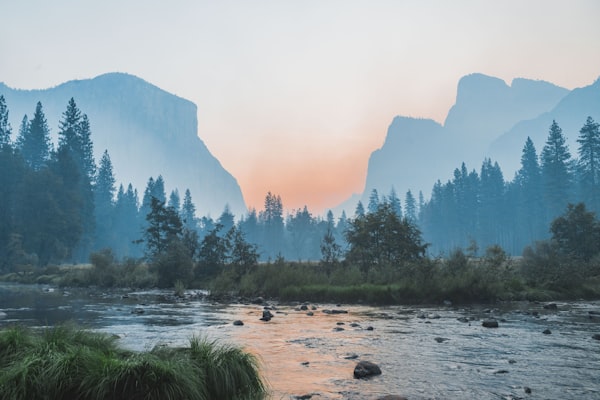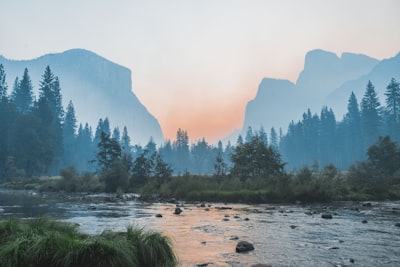
Human Impacts on Climate and Biodiversity
Quiz
•
Science
•
10th Grade
•
Practice Problem
•
Easy
+8
Standards-aligned
B. Field
Used 24+ times
FREE Resource
15 questions
Show all answers
1.
MULTIPLE CHOICE QUESTION
30 sec • 1 pt
Which of the following best describes how deforestation can impact biodiversity in a tropical rainforest ecosystem?

(Image: Deforestation in a tropical rainforest. Source: Wikimedia Commons)
It increases the number of plant species by providing more sunlight.
It reduces habitat availability, leading to a decline in species diversity.
It has no effect on animal populations.
It only affects non-native species.
Answer explanation
Deforestation reduces habitat availability for many species in tropical rainforests, leading to a decline in biodiversity. This loss of habitat disrupts ecosystems and threatens both plant and animal populations.
Tags
NGSS.MS-LS2-1
NGSS.MS-LS2-2
NGSS.MS-LS2-4
2.
MULTIPLE CHOICE QUESTION
30 sec • 1 pt
Which human activity is most directly responsible for the increase in atmospheric carbon dioxide levels contributing to climate change?

Image: A coal-fired power plant emitting smoke, representing burning fossil fuels.
Planting trees
Burning fossil fuels
Using solar panels
Recycling plastics
Answer explanation
Burning fossil fuels, such as coal, oil, and natural gas, releases significant amounts of carbon dioxide into the atmosphere, making it the primary human activity driving the increase in CO2 levels and contributing to climate change.
3.
MULTIPLE CHOICE QUESTION
30 sec • 1 pt
What is the primary reason that invasive species introduced by humans can threaten native biodiversity?

Illustration: Invasive species (right) outcompeting native species (left) for resources.
They always have more attractive flowers.
They often outcompete native species for resources.
They only survive in polluted environments.
They require less water than native species.
Answer explanation
Invasive species often outcompete native species for resources such as food, water, and habitat, leading to a decline in native biodiversity. This competition is a primary threat to the survival of native species.
Tags
NGSS.MS-LS2-2
NGSS.MS-LS2-5
4.
MULTIPLE CHOICE QUESTION
30 sec • 1 pt
Which of the following is a direct effect of ocean acidification caused by increased carbon dioxide emissions?

Illustration: This diagram shows how increased CO2 in the atmosphere leads to ocean acidification, affecting marine life.
Increased growth of coral reefs
Difficulty for marine organisms to form shells
Decreased water temperature
Higher oxygen levels in water
Answer explanation
Ocean acidification, caused by increased CO2, leads to lower pH levels in seawater, making it difficult for marine organisms like shellfish to form their shells, as seen in the provided image.
Tags
NGSS.MS-LS2-3
NGSS.MS-LS2-4
5.
MULTIPLE CHOICE QUESTION
30 sec • 1 pt
A city plans to expand into a nearby wetland. Using evidence, explain how this expansion could impact both local climate and biodiversity. What strategies could the city use to minimize negative effects?
Expansion will have no impact; no strategies are needed.
Expansion may increase local temperatures and reduce species diversity; strategies include preserving wetland areas and creating green spaces.
Expansion will only affect water quality; strategies include building more roads.
Expansion will increase biodiversity; strategies include removing all native plants.
Answer explanation
Expansion can raise local temperatures due to the urban heat island effect and lead to a loss of biodiversity as wetland habitats are destroyed. Strategies like preserving wetlands and creating green spaces can help mitigate these impacts.
Tags
NGSS.MS-ESS3-4
NGSS.MS-LS2-4
NGSS.MS-LS2-5
6.
MULTIPLE CHOICE QUESTION
30 sec • 1 pt
Given the evidence that coral bleaching is linked to rising ocean temperatures, propose a plan that could help protect coral reefs from further damage. 
Which of the following is the most effective approach?
Increase fishing near coral reefs.
Reduce greenhouse gas emissions and establish marine protected areas.
Build more coastal resorts.
Remove all algae from the reefs.
Answer explanation
Reducing greenhouse gas emissions addresses the root cause of rising ocean temperatures, while establishing marine protected areas helps protect coral reefs from further damage, making this the most effective approach.
Tags
NGSS.MS-ESS3-4
NGSS.MS-ESS3-5
NGSS.MS-LS2-4
NGSS.MS-LS2-5
7.
MULTIPLE CHOICE QUESTION
30 sec • 1 pt
A local government wants to balance economic development with the conservation of a nearby forest.
Using reasoning and evidence, which plan would best achieve this goal?
Allow unrestricted logging in the forest.
Implement sustainable logging practices and set aside protected areas.
Convert the entire forest to farmland.
Ignore environmental regulations.
Answer explanation
Implementing sustainable logging practices and setting aside protected areas balances economic development with conservation, ensuring the forest's health while allowing for responsible resource use.
Tags
NGSS.MS-ESS3-4
NGSS.MS-ETS1-2
NGSS.MS-LS2-5
Create a free account and access millions of resources
Create resources
Host any resource
Get auto-graded reports

Continue with Google

Continue with Email

Continue with Classlink

Continue with Clever
or continue with

Microsoft
%20(1).png)
Apple
Others
By signing up, you agree to our Terms of Service & Privacy Policy
Already have an account?
Similar Resources on Wayground

20 questions
Plate Tectonics
Quiz
•
9th - 12th Grade

15 questions
Membrane transport
Quiz
•
10th - 12th Grade

14 questions
Week 15 Vocab Check
Quiz
•
7th Grade - University

10 questions
Extraneous variables
Quiz
•
10th - 12th Grade

10 questions
Slow loris for sakarat
Quiz
•
9th - 12th Grade

16 questions
Newspaper
Quiz
•
5th Grade - Professio...

10 questions
2. Life processes in living organisms part 1.10thScience and
Quiz
•
10th - 12th Grade

20 questions
Our community
Quiz
•
3rd Grade - University
Popular Resources on Wayground

20 questions
Brand Labels
Quiz
•
5th - 12th Grade

11 questions
NEASC Extended Advisory
Lesson
•
9th - 12th Grade

10 questions
Ice Breaker Trivia: Food from Around the World
Quiz
•
3rd - 12th Grade

10 questions
Boomer ⚡ Zoomer - Holiday Movies
Quiz
•
KG - University

25 questions
Multiplication Facts
Quiz
•
5th Grade

22 questions
Adding Integers
Quiz
•
6th Grade

10 questions
Multiplication and Division Unknowns
Quiz
•
3rd Grade

20 questions
Multiplying and Dividing Integers
Quiz
•
7th Grade
Discover more resources for Science

10 questions
Exploring Newton's Laws of Motion
Interactive video
•
6th - 10th Grade

10 questions
Exploring the States of Matter
Interactive video
•
6th - 10th Grade

16 questions
Macromolecules Quiz
Quiz
•
10th Grade

10 questions
Exploring Biomes and Ecosystems for Kids
Interactive video
•
6th - 10th Grade

10 questions
Newton's Laws in NFL Action
Interactive video
•
6th - 10th Grade

15 questions
Carrying Capacity and Limiting Factors
Quiz
•
9th - 12th Grade

20 questions
Characteristics of Life
Quiz
•
10th Grade

10 questions
Exploring Thermal Energy and Temperature Concepts
Interactive video
•
6th - 10th Grade


 Increased fishing and pollution; solution: enforce fishing limits and reduce pollution sources.
Increased fishing and pollution; solution: enforce fishing limits and reduce pollution sources. More rainfall; solution: build more dams.
More rainfall; solution: build more dams. Natural migration; solution: do nothing.
Natural migration; solution: do nothing. Increased sunlight; solution: plant more trees.
Increased sunlight; solution: plant more trees.

